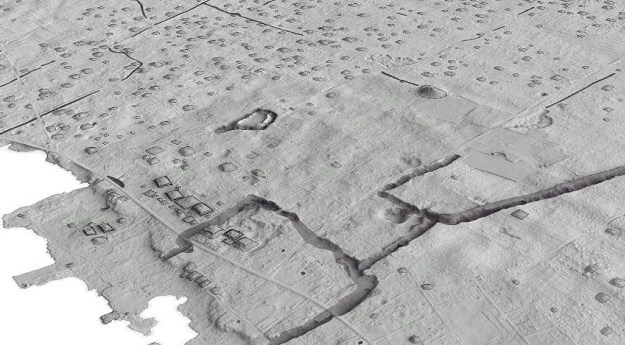
This week marks the 40th anniversary of the launch of the first Landsat satellite.
Landsat 1 was launched on 23 July 1972; at that time the satellite was known as the Earth Resources Technology Satellite (ERTS). It was the first Earth-observing satellite to be launched with the express intent to study and monitor our planet's landmasses.
To perform the monitoring, Landsat 1 carried two instruments: a camera system built by the Radio Corporation of America (RCA) called the Return Beam Vidicon (RBV), and the Multispectral Scanner (MSS) built by the Hughes Aircraft Company (El Segundo, CA; NASA contract NAS 5-11255).
The RBV was supposed to be the prime instrument, but the MSS data were found to be superior. In addition, the RBV instrument was the source of an electrical transient that caused the satellite to briefly lose altitude control, according to the Landsat 1 Program Manager, Stan Weiland.
The MSS instrument was flown as the secondary and highly experimental instrument. "But once we looked at the data, the roles switched," relates Stan Freden, Landsat 1 Project Scientist.
The MSS recorded data in four spectral bands—a green, red, and two infrared bands.
To help understand the data and to explore the potential applications of this new technology, NASA oversaw 300 private research investigators. Nearly one third of these were international scientists.
These researchers came from a wide array of Earth science disciplines. They evaluated the usefulness of Landsat data to their respective fields.
In the foreword of the U.S. Geological Survey's "ERTS-1 A New Window on Our Planet," published in 1976, then-director of the USGS, Dr. V. E. McKelvey, wrote: "The ERTS spacecraft represent the first step in merging space and remote-sensing technologies into a system for inventorying and managing the Earth's resources."
Landsat 1 operated until January 1978, outliving its design life by five years. The Landsat 1 Multispectral Scanner acquired over 300,000 images providing repeated coverage of the Earth's land surfaces. The quality and impact of the resulting information exceeded all expectations.
The eighth in the Landsat lineage – the Landsat Data Continuity Mission (LDCM) – is scheduled to be launched in January 2013. It will continue to obtain valuable data and imagery to be used in agriculture, education, business, science, and government. The new satellite is being assembled in Arizona by Orbital Sciences Corporation.













